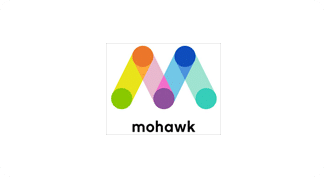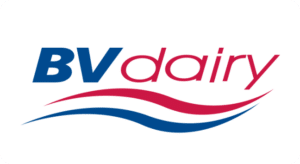

Location: Blackmore Vale and Shaftesbury, Dorset, United Kingdom
Industry: Dairy and Food Processing and Manufacturing
Website: www.bvdairy.co.uk
Founded in 1958 as a family farm in England’s West Country, BV Dairy is now a thriving modern business. Each year, the company purchases 35 million liters of milk from dairy farms within a 25-mile radius of their production facility in Shaftesbury, Dorset and turns them into dairy products for food distribution and manufacturing firms. BV Dairy’s range includes their award-winning Dorset clotted cream, as well as yogurts, buttermilk, soft cheese, and mascarpone.
“One of our employees was wasting half a day or more each week filing paper, and the process was just getting out of hand,” recalls Stephen Giangiordano, supervisor of accounting service at Cohoes, N.Y.-based Mohawk Fine Papers. “We had stacks of paper lined up and down the tops of filing cabinets.”
Today, the company’s filing system is out of sight, and not in the groovy, 1960s meaning of the phrase. Paper files and filing cabinets are, for all intents and purposes, gone, thanks to a decision the company made to shift to a document management system with DocStar.
Mohawk Fine Papers manufactures and distributes premium uncoated paper and coated stock used by companies in annual reports, high-end brochures and marketing materials, and other presentation pieces. The company ranks as the largest maker of premium printing, writing and imaging papers in the country.
The privately owned, 150-some-year-old company runs three paper mills – one in Cohoes, another in nearby Waterford, N.Y., and a third in the Cincinnati suburb of Hamilton, Ohio. It also operates a distribution center in Albany, N.Y., a warehouse and converting center in Saybrook, Ohio, northeast of Cleveland, a sales office in Scotland and a distribution center in the Netherlands.
All told, the company employs roughly 725 people – 400 of them in Waterford and Cohoes, including 75 corporate office employees. Today Mohawk distributes papers in more than 50 countries worldwide.
“DocStar gives us the power to add and retrieve more documents to and from the system. It increases our accuracy, efficiency, and traceability. Furthermore, this solution has plenty of flexibility that lets us tune and tweak workflows as our business processes change and grow. Most of all, the introduction of DocStar has allowed us to streamline processes and save time—notably in terms of invoice approval and delivery note processing—because it brings all of the relevant information and documentation together in one place.”
-Mark Damen, ERP Systems Manager | BV Dairy
It was at the corporate office—and in the accounting department, to be specific—that Mike Ruhm, Mohawk’s manager of treasury compliance, could envision dramatic payback from eliminating paper files. “When we were exploring electronic document management, my big selling point was for accounts payable and accounts receivable, because of all the paper those departments used,” he recalls.
He also believed that success in accounting could be a springboard to wider adoption. “I said that once we got it in, other people in the company would see the benefits and its use would expand,” Ruhm notes. “That’s exactly what happened.”
Mohawk entered the document management software arena in the summer of 2006, when it signed on with DocStar and put into use a single Canon duplex color scanner that processed about 60 pages a minute. It took two temporary employees about three weeks to archive all of the department’s 2006 documents—40,000 pages in all.
“We used DocStar for a couple of different applications,” says Giangiordano. The company integrated document management with its accounts payable process. “After we entered invoices into the accounting system, we scanned them into DocStar,” he explains. On the accounts receivable side, customer credits are also scanned and available in the system.
DocStar’s DataLink software extracts pre-determined data from the company’s ERP system, Business Planning and Control System (BPCS). According to Giangiordano, using the DataLink module makes it easier to connect documents with the accounting system by retrieving and reading data contained within the system. “That’s a real benefit,” he notes. “We can enter one field and DataLink extracts anywhere from 20 to 30 fields that we can search by later.” This reduces keystrokes needed during the filing process, improves accuracy and drives consistent information gathering, which translates into faster filing.
Mohawk’s initial implementation allowed secure DocStar document access by the company’s customer service team, as well as its accounting staff, including payroll staff, cost analysts and financial analysts. “People in other locations – Hamilton and Saybrook – can access their documents via a Citrix server,” Giangiordano adds.
DocStar’s WebView module allowed for easy information sharing and access. The software lets any documents the company has stored on the DocStar server to be viewed securely from any computer, via the Internet or corporate Intranet. “WebView gives our customer service team access through an Internet connection,” Giangiordano says.
As Ruhm expected, in a matter of months, accounting found itself handling the same amount of work as it did before signing on with DocStar, but with one less employee. “Not only did it save a person, it allowed us to work more quickly,” he explains. “It really helped us shorten our closing cycle, because people don’t have to go digging through files—some of which might not have even been filed yet—to find answers to questions.”
Early on, staff responded positively to the change. “The initial feedback was good,” he recalls. Over time, as filing accuracy improved, the response was more enthusiastic. “They thought it was fantastic – a real time saver,” Giangiordano adds.
Mohawk’s use of DocStar quickly expanded beyond its accounting and financial functions. Today, more than 50 employees use the system. The company’s technical quality team deployed a standalone system in its own operation. The department scans and stores Certificates of Compliance, which are used to measure and analyze product specifications on incoming raw materials.
The quality team is the only group that needs to access these documents, Giangiordano notes. “They have one template for scanning and they have their own security classification. It’s a self-sufficient operation.”
Before long, other departments were signing on. “Today, every shop, every office and every department has a computer set-up that enables them to use the DocStar system,” Giangiordano says. And employee efficiency is up. “Now our people spend more time on value-added work instead of searching for and making copies of documents, and that has saved both time and money,” he notes.
“We’ve expanded our accounts payable usage to include everything from a tax-exempt document to automated check register approvals and all of the vendor set-up information,” he adds. “All of that now gets scanned in.” Signed bill of ladings are scanned in by the logistics department for the accounting group to retrieve for audit purposes and for customer collections.
For general accounting, journal entries are scanned in, as are all bank transactions. Purchasing uses electronic document management for contracts and leases, purchase card agreements that employees sign, as well as purchase card statements and receipts.
“We have also implemented it our warehouse,” Ruhm explains. “They scan in all of the customer-return paperwork for anything that comes back. Data is filed using the Return Merchandise Authorization (RMA) number that was entered into the system when the customer return was first arranged.
“It’s a really simple process,” he adds. “They have scanners down at the warehouse and all they need to do is enter the RMA number, and DataLink automatically pulls in information entered when the authorization was initially given.”
Warehouse employees even upload digital photos of any damaged product, which is also associated with the original RMA document. “We can send these digital photos to the customer and show them the damage, or if it’s a freight claim, we can use the photos to support that,” Ruhm explains.
All human resources documents now reside on the DocStar system. “We use DataLink for both HR payroll and our ERP system,” Giangiordano explains, “so that keeps things consistent.” The company uses folder structures to file employees’ documents and, because they use a standard template, authorized staff can search by employee name or ID number and find needed information quickly and securely.
Recently, the company provided access to invoices for hired consultants across the state. “They are auditors operating on our behalf, looking for instances where we overpaid State sales tax,” Ruhm explains. “We are able to use WebView to give them remote access to relevant files, which sped up the process and made it significantly more efficient.” Security protocols built into DocStar allowed Mohawk to open up only the files the consultants actually needed to audit.
System security is critically important, Ruhm notes, given the broad, company-wide adoption of the DocStar system. “We have very strict security restrictions,” he explains. “We tie security—who is able to see what in DocStar—to an individual. So information about vendors or HR information, for instance, is only viewable by people who are authorized to see it. DataLink knows the security class and protects documents from unauthorized viewing.”
“Beyond that, however, we don’t really have restrictions on who can use the system,” he adds. “If there is a good business case to have documents in DocStar, then we will build a process around it. Over the past several years, we have been able to identify many places where the system can add value.”
The DocStar system’s flexibility and, more importantly, its ease of use helped drive this growth. “There’s virtually no training involved,” Giangiordano explains. “You set it up, turn it on, and anyone can really figure out how to use it.”
In many ways, ease of access and broad deployment have brought the company together. “We have many different locations, of course, but with DocStar geography doesn’t seem to separate us like it used to,” he adds. “Everyone can look at things in the system—whether they’re at a distribution center or at a facility in Ohio or in another department here in Cohoes—and they can do it in an extremely efficient manner.”
Mohawk Fine Papers continues to capture greater efficiencies through its DocStar system. Recently, the company upgraded to version 3eleven (3.11), something Giangiordano says will improve workflows companywide. “The upgrade went extremely well,” he adds.
That’s not surprising, given the system’s track record within the firm. “Simply put, it works!” he says. “All our employees have to do is jump on a computer and search for a document or access the auto import system. It really is an effective tool in our organization.”
“We purchased the product in 2006 and our satisfaction continues to be high,” Giangiordano adds. “Its ease of installation and ease of use are big factors. Plus, the price was right. It was right in our ballpark. And it was a product that would do exactly what we needed it to do—and then some.”
“It took some campaigning to get the system in here several years ago,” Ruhm recalls, “but now that it’s here, if we tried to take it away, well, I don’t want to even think about what would happen.”
© Epicor Software Corporation 2025 | Terms of Use | Privacy Policy | Cookie Policy |